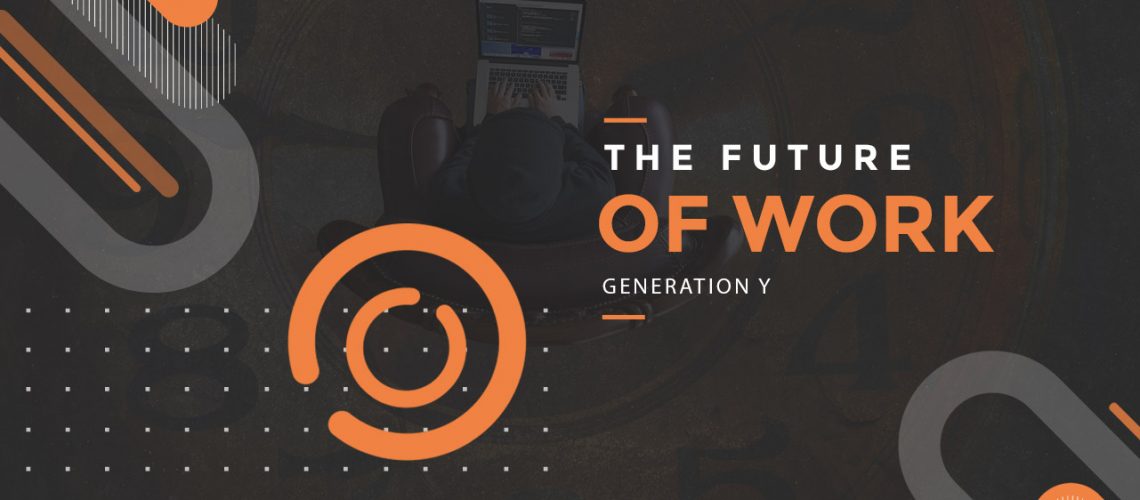
Gerald Tombs
The Future of Work Now: Generation Y
- May 31, 2018
- , 12:41 pm
- , Advice for Employers
The future of work depends upon embracing and attracting the younger generation into your business: Generation Y. If you are not proactively bringing this technically-savvy generation into your workplace, then you are not moving forward.
And we all know what happens when you don’t keep up!
Why Generation Y?
Embracing Generation Y, rather than resisting them, will yield a number embryonic positive culture changes.
Not only will the average age of your company come down, but you will notice a certain vibrancy in the office – where older workers will likely become rejuvenated and reinvigorated. Mixing young energy with mature experience, if managed correctly, becomes a very powerful drug.
Having the right balance of maturity and vibrant energy not only helps the business flourish but also provides an unexpected boost when it comes to selling or having a company valued.
It is important to match your companies average age with the sector you sell into, this is especially true for the technology sector. You might have the most amazing product in the tech market but if you have an ageing workforce, you are seen as a higher risk and thus less valuable.
Great Expectations
For the future of work, The Generation Y have very different expectations to the Generation X (X = the oldies amongst us; typically born in the 1960s and 70s, I include myself in the bracket – age 52). As Douglas Coupland, author of Generation X, JPod & Microserfs explains:
The nine-to-five is barbaric. I really believe that. I think one day we’ll look back at the nine-to-five employment in a similar way to how we see child labour in the 19th century.
The concept of rigid 9 – 5 will become old fashioned and irrelevant, especially when the “job for life” is no longer something people crave. One thing is for certain with Generation Y, you have to work very hard to retain them for more than a couple of years before their thirst for change moves them on. We have found that the best route for both parties is to enter into a two year ‘Tour of Duty’, see the Aliance book from Reid Hoffman.
What’s the Gig?
Research shows that Millennial’s now have less access to their own transport (only 35 % of under 20’s have a car compared to 43 % 20 years ago). So office location and its accessibility to public transport becomes an important factor. This is where Agile work environments become relevant. Enthusiasts of the Agile way believe you can work anywhere with the right collaborative technology and the right ‘open & trusted’ relationship between employer and employee. Creating a flexible working approach has proven beneficial to all. Research has also shown that two-thirds of employees would rather take another job to ease the commute or have flexible working. Furthermore, business find a decrease in unscheduled absences, resulting in increased productivity.
Two-thirds of employees would rather take another job to ease the commute or have flexible working.
Research confirms that 36% of people would choose working from home over a pay rise. A recent poll of technology professionals revealed that 37 % would take a pay cut of 10 % if they could work from home. The internet is shrinking the world and as a result, businesses now have access to a large pool of remote overseas workers. In the technical support industry it is no longer important for staff to be office based. This opens up many opportunities.
The Benefits of Hiring a Contractor
Whilst all these look like benefits to the contractor, there are actually very tangible benefits to the hiring company. A happy and fulfilled contractor is more productive, reliable and dependable. Then there is the price advantage of a remote contractor over a local employee. Even if the contractor is local, there are many commercial advantages over employed positions.
A happy and fulfilled contractor is more productive, reliable and dependable.
The Impact of Global Economic Change
Companies in the UK and USA (H-1B Visa) are in the throws of experience workforce challenges. Brexit is likely to see new barriers arrive which make it harder to recruit a foreign worker. The USA government is also actively reducing the number of foreign workers permitted into the country. There are two likely outcomes, staff costs will increase as we all shop in the same pond of limited resources or we move certain positions to outside of the country (use contractors).
Remote Working and Productivity
Such drivers added to the increasing cost of office space is pushing many companies to seriously rethink office expansion plans which allow remote workers to remain in touch with all aspects of the business whilst ensuring staff can remain productive. What is strange is the companies who faced the ‘remote’ workers challenge several years ago have seen productivity increases across the business, and not just remote workers.
If you are more than eight meters from a colleague, you are more likely to email them than walk to their desk
Digital Workplaces and the Future of Work
Research (http://danielcoyle.com/) shows that if you are more than eight meters from a colleague, you are more likely to email them than walk to their desk. So eight meters – or 800 miles – what is the difference! With so many organisations shifting to digital workplaces, it’s essential that we continue to understand ways that people can connect and seamlessly exchange information.
Digital workplaces allow people to communicate and collaborate beyond their physical locations. The technology that supports these virtual work environments can be anything from email, to instant messaging, document management software and social intranets.
Conclusion
Disruption is everywhere. Whether that be the way you order your taxi, how drones deliver your online order or how you travel to work (hint – driver-less vehicles). We are in a rapidly changing world and many believe we are on the cusp of the biggest disruption of all, the very nature of work itself. Staff, who make up the DNA of your company, are changing their expectations and requirements. Are you ready for your next recruit to be remotely located, short term contracted or even not employed at all? It’s time to buckle your seat belt, because you’re already there…
So what’s the future of work in your business? Do you use remote contract workers – and, would you consider it if you don’t?



